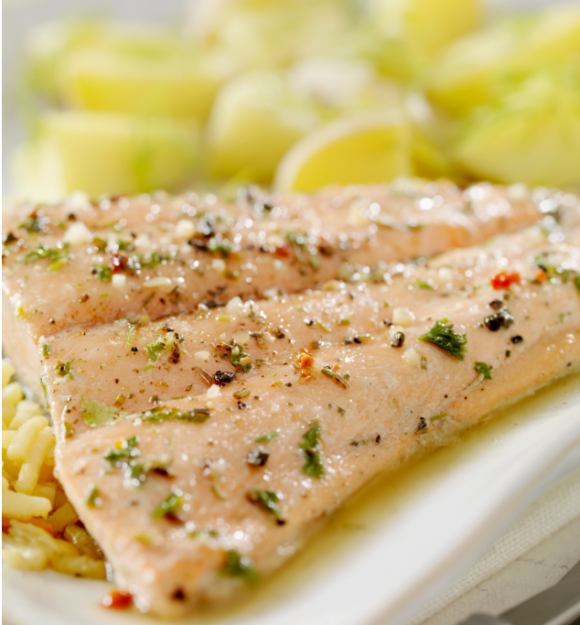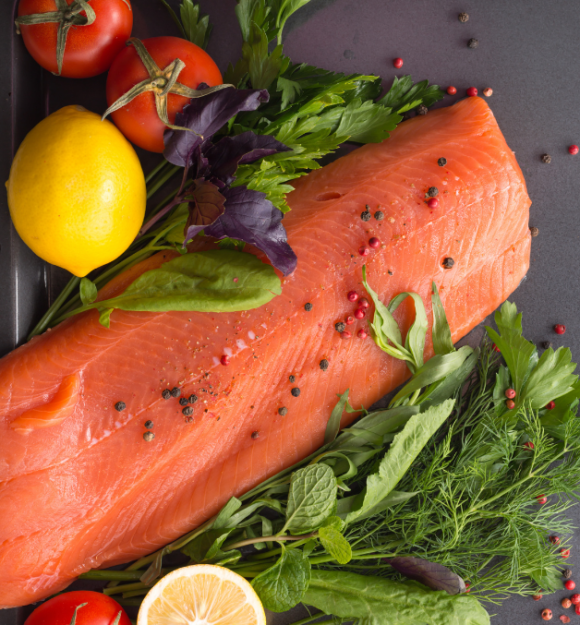High in protein, minerals, and omega-3 fatty acids, salmon is a healthy and delicious seafood superstar. Its great for your overall health, brain health, and even recommended for expecting moms. Therefore, salmon should be a staple in your home. At BluGlacier, we like our salmon fresh. So we typically don’t recommend freezing it. Never frozen salmon is always the tastiest. However, if you’re hoping to eat salmon regularly, don’t live nearby stores, or don’t have time to go to the store regularly, you may want to buy and store it. Storing and freezing salmon can allow you to enjoy salmon for longer and be able to enjoy it anytime you want. Fortunately, salmon can be stored frozen for up to three months or even longer. But you have to freeze it properly! How long you can keep salmon frozen directly depends on following the steps below.
Here is an all-in-one guide to storing and freezing salmon to extend its shelf life. Let’s get started!
How Long Can You Keep Salmon Frozen?
The duration for which salmon can be freezed varies depending on the type of salmon.
Smoked Salmon
To maximize the shelf life of an opened package of smoked salmon, tightly wrap it in a heavy-duty aluminum or plastic wrap.
Properly stored, an opened packaged lasts for about one month in the freezer but remains safe beyond that time.
Canned Salmon
Constantly refrigerated canned salmon is safe for up to 3-4 days. You can extend the shelf life of canned salmon by freezing it.
Constantly frozen canned salmon, at 0°F, remains safe for consumption for up to 3 months.
Raw Salmon
When frozen, raw salmon will maintain its best quality for about 2-3 months. Though you can freeze it for up to six months, its quality starts degrading after three months.
To freeze raw salmon, first rinse it, pat it dry, and wrap in an air-tight container. Label it with the date of freezing, and use it before six months.
How To Thaw Frozen Salmon
When it comes to defrosting and thawing frozen salmon, you have a few options. Cooking frozen salmon may spoil its flavor and texture. So, be careful and allocate enough time to defrost the fish properly so that its flavor and nutrients remain intact. Remember, thawing is different than reheating. We’ve discussed how to properly reheat salmon on this post.
Make sure you keep the fish away from a dangerous temperature range (41-135°F) where salmon can grow bacteria.
Here are three ways to thaw frozen salmon safely:
Thaw in Refrigerator – The Safest Method
Let your frozen salmon thaw naturally in the refrigerator for about 12 hours or more. Plan your meal in advance and transfer the frozen salmon to the refrigerator.
If the salmon weighs more than one pound, take it out of the freezer 24 hours before cooking time. Remove it from the packaging and wrap in a plastic wrap that is big enough to hold the entire piece. Keep it away from sweet food; otherwise, it may absorb the fishy smell.
Thaw in Cold Water
If you are in a hurry and have only one hour to cook your dish, you can defrost the salmon in cold tap water.
Remove the salmon packaging, package it again in a dry zip-lock bag and seal it closed. Place the bag in a large bowl so that the fish defrosts evenly.
Next, move the bowl in the sink and fill it with cold tap water. Do not thaw out fish in hot water because it may create the risk of bacterial growth.
Replace water in the bowl every 10-15 minutes until the fish completely defrosts. Cook the salmon immediately; otherwise, the fish may go bad if left uncooked for too long.
Thaw in the Microwave
Though microwave thawing is the quickest way to defrost salmon and prepare it for cooking, this method is our least recommended option. We’re not fans of this method because microwave heating may pass harmful cause uneven thawing of the salmon and there is more of a risk of bacterial growth.
To thaw salmon in the microwave, remove the salmon from its packaging. Then place it on a paper towel in the microwave. Position the fish so that the thinnest parts rest in the middle of the container. Cover the fish with another paper towel.
Set the timer five minutes for every one pound of salmon. Let the microwave run for two and a half minutes and then flip the salmon to the other side. Keep thawing for one minute.
Once your salmon is thawed properly, you can broil, grill, fry, or cook it!
How To Tell If Salmon Is Bad Or Spoiled
Salmon is undoubtedly one of the tastiest seafood options out there. But when you consume salmon that has gone bad or spoiled, it not only tastes bad but you can also develop illnesses. Illnesses due to consuming raw salmon ranging from mild stomach-ache to serious parasitic infections are no fun!
But, how to tell if your salmon is spoiled? Check for these signs of a bad salmon:
Visual Signs
- Dulled, gray tint
- Sunken, whitish, or filmy eyes instead of white eyes with dark purple pupil
- Sticky, white, or stringy-looking gills
- Mold, discoloration, slimy residue, or odd growths
- Uncommon dark spots
Scent Signs:
- It does not smell like the sea; mild, slightly salty
- Penetratingly fishy smell
Texture Signs:
- Press down on the flesh lightly. If it springs back, it is safe to eat. But, if the flesh stays dimpled, stay away from it.
- Do not eat salmon with fragile texture.
- Do not eat soggy frozen salmon.
Overall, you can use your senses to determine if the salmon is bad or spoiled. Stay away from spoiled salmon to take care of your taste buds and health. Remember that only the best quality salmon tastes delicious. And most importantly, even though freezing salmon is an option we always recommend its best to eat your salmon fresh and never frozen! Bon appétit.



